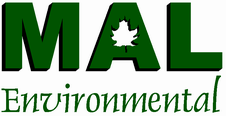 |
| |
| Lead |
| |
| Background |
Lead
occurs naturally in the environment and has many industrial uses.
Trace amounts of lead are found in air, soil, household dust, food,
drinking water and various consumer products. Since the early 1970s,
lead exposure in Canada has decreased substantially, mainly because
leaded gasoline and lead based paints were phased-out and the use
of lead solder in food cans was virtually eliminated.
Short-term exposure to lead can cause vomiting, diarrhoea, convulsions,
coma or even death. Chronic exposure to lead can cause appetite
loss, abdominal pain, constipation, fatigue, sleeplessness, irritability
and headache. Severe symptoms include anaemia, damages to the nervous
system, impaired mental functions and kidney dysfunction. Severe
cases of lead poisoning are rare in Canada. |
| |
| Regulatory
Requirements |
In
Canada, the Hazardous Product Act has recently classifies lead-based
paint as paint applications containing 0.06% lead content by weight
(600 ppm) or 600 µg/g. Industrial processes involving lead
are regulated under the Ontario Occupational Health & Safety
Act, R.S.O. 1990, Regulation 843 as amended by O.Reg. 109/04, Designated
Substance – Lead. Exposure levels and respiratory protection
in this regulation also apply to construction projects at a workplace
where workers are likely to be exposed to lead.
A guideline respecting lead on construction projects was published
by the Occupational Health and Safety Branch of the Ontario Ministry
of Labour in September 2004. The disturbance of lead on construction
projects is classified as Minimum (Type 1), Intermediate (Type 2)
or Maximum (Type 3) work, each of which will have defined precautionary
measures. Respiratory protection required under the guideline is
dependent upon the classification of work. There is no specific
requirement to monitor exposure levels.
The disposal of construction waste containing lead is controlled
by the Ontario Environmental Protection Act, R.R.O., 1990, Regulation
347, General – Waste Management. The classification of the
waste is dependent upon the results of leachate tests. The transport
of the waste to the disposal site is controlled by the federal Transportation
of Dangerous Goods Act, 1992. |
|
 |



